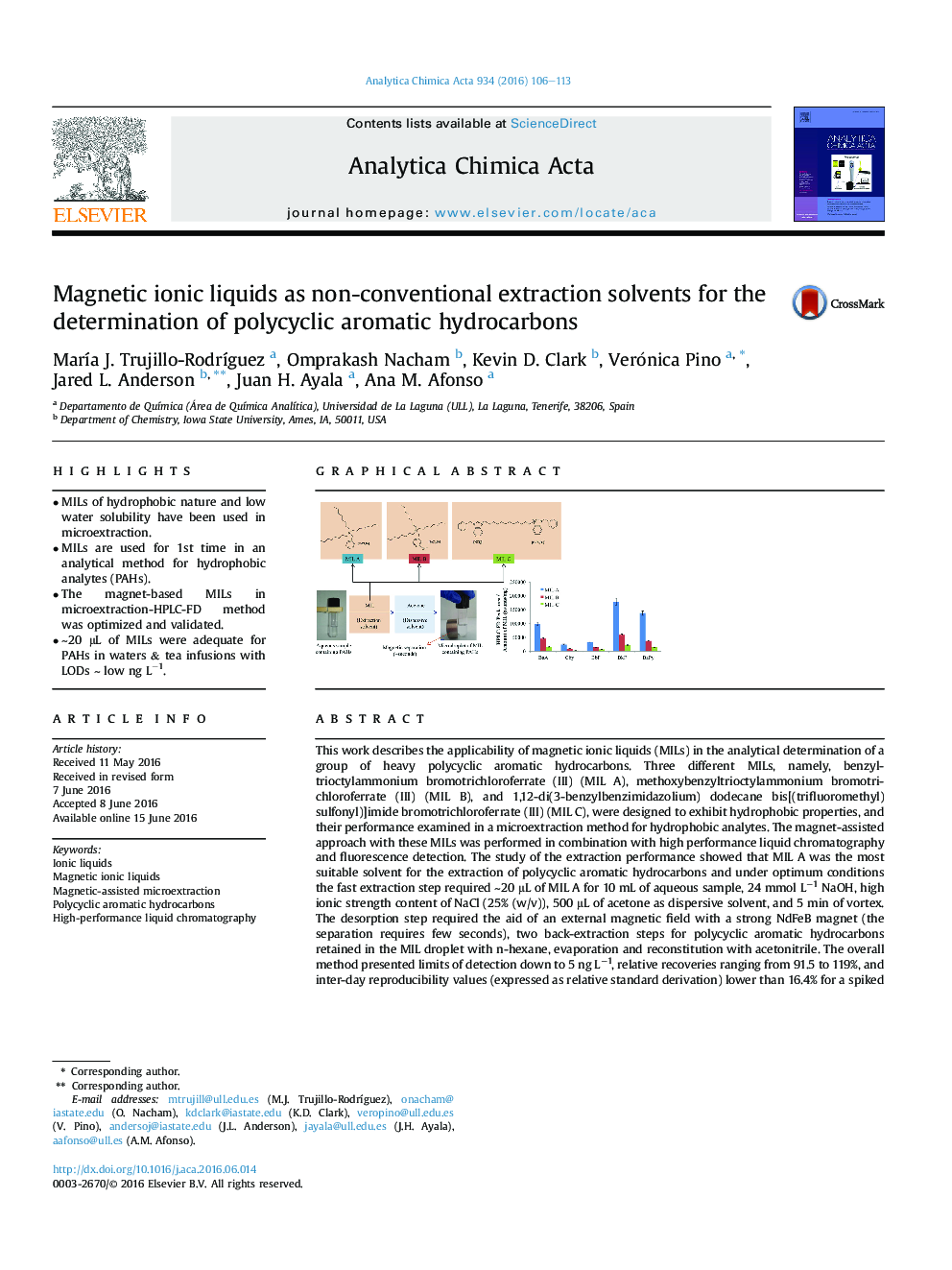| Article ID | Journal | Published Year | Pages | File Type |
|---|---|---|---|---|
| 1162735 | Analytica Chimica Acta | 2016 | 8 Pages |
•MILs of hydrophobic nature and low water solubility have been used in microextraction.•MILs are used for 1st time in an analytical method for hydrophobic analytes (PAHs).•The magnet-based MILs in microextraction-HPLC-FD method was optimized and validated.•∼20 μL of MILs were adequate for PAHs in waters & tea infusions with LODs ∼ low ng L−1.
This work describes the applicability of magnetic ionic liquids (MILs) in the analytical determination of a group of heavy polycyclic aromatic hydrocarbons. Three different MILs, namely, benzyltrioctylammonium bromotrichloroferrate (III) (MIL A), methoxybenzyltrioctylammonium bromotrichloroferrate (III) (MIL B), and 1,12-di(3-benzylbenzimidazolium) dodecane bis[(trifluoromethyl)sulfonyl)]imide bromotrichloroferrate (III) (MIL C), were designed to exhibit hydrophobic properties, and their performance examined in a microextraction method for hydrophobic analytes. The magnet-assisted approach with these MILs was performed in combination with high performance liquid chromatography and fluorescence detection. The study of the extraction performance showed that MIL A was the most suitable solvent for the extraction of polycyclic aromatic hydrocarbons and under optimum conditions the fast extraction step required ∼20 μL of MIL A for 10 mL of aqueous sample, 24 mmol L−1 NaOH, high ionic strength content of NaCl (25% (w/v)), 500 μL of acetone as dispersive solvent, and 5 min of vortex. The desorption step required the aid of an external magnetic field with a strong NdFeB magnet (the separation requires few seconds), two back-extraction steps for polycyclic aromatic hydrocarbons retained in the MIL droplet with n-hexane, evaporation and reconstitution with acetonitrile. The overall method presented limits of detection down to 5 ng L−1, relative recoveries ranging from 91.5 to 119%, and inter-day reproducibility values (expressed as relative standard derivation) lower than 16.4% for a spiked level of 0.4 μg L−1 (n = 9). The method was also applied for the analysis of real samples, including tap water, wastewater, and tea infusion.
Graphical abstractFigure optionsDownload full-size imageDownload as PowerPoint slide
